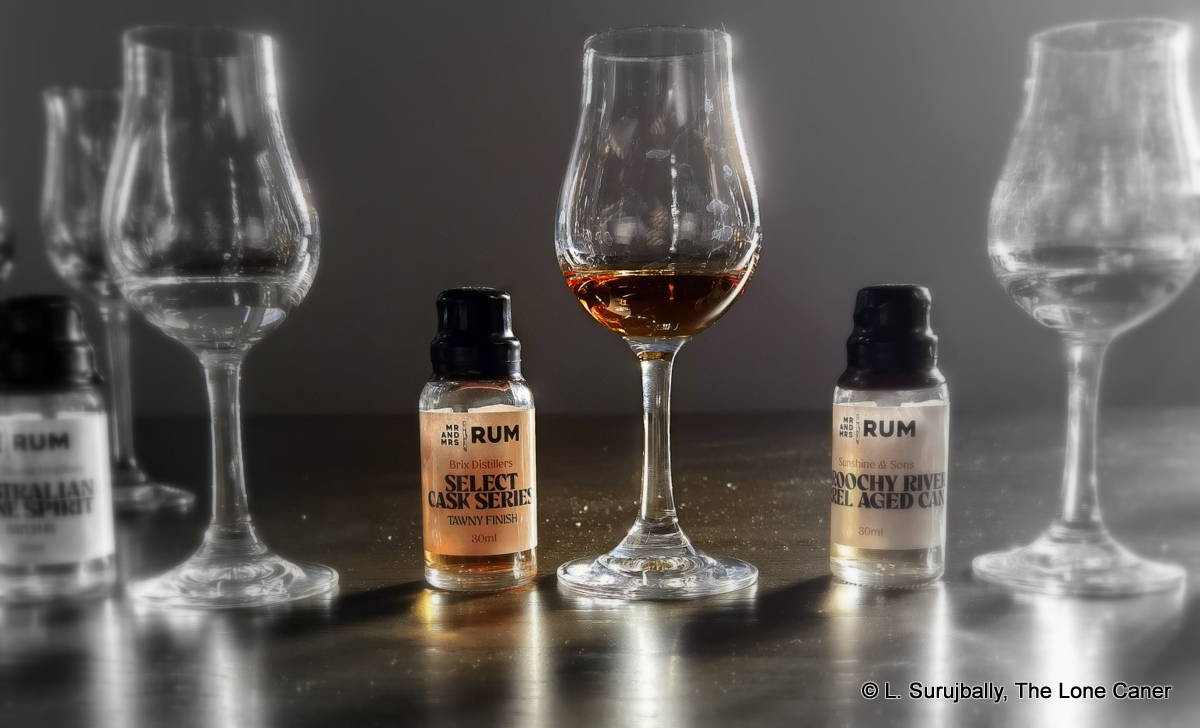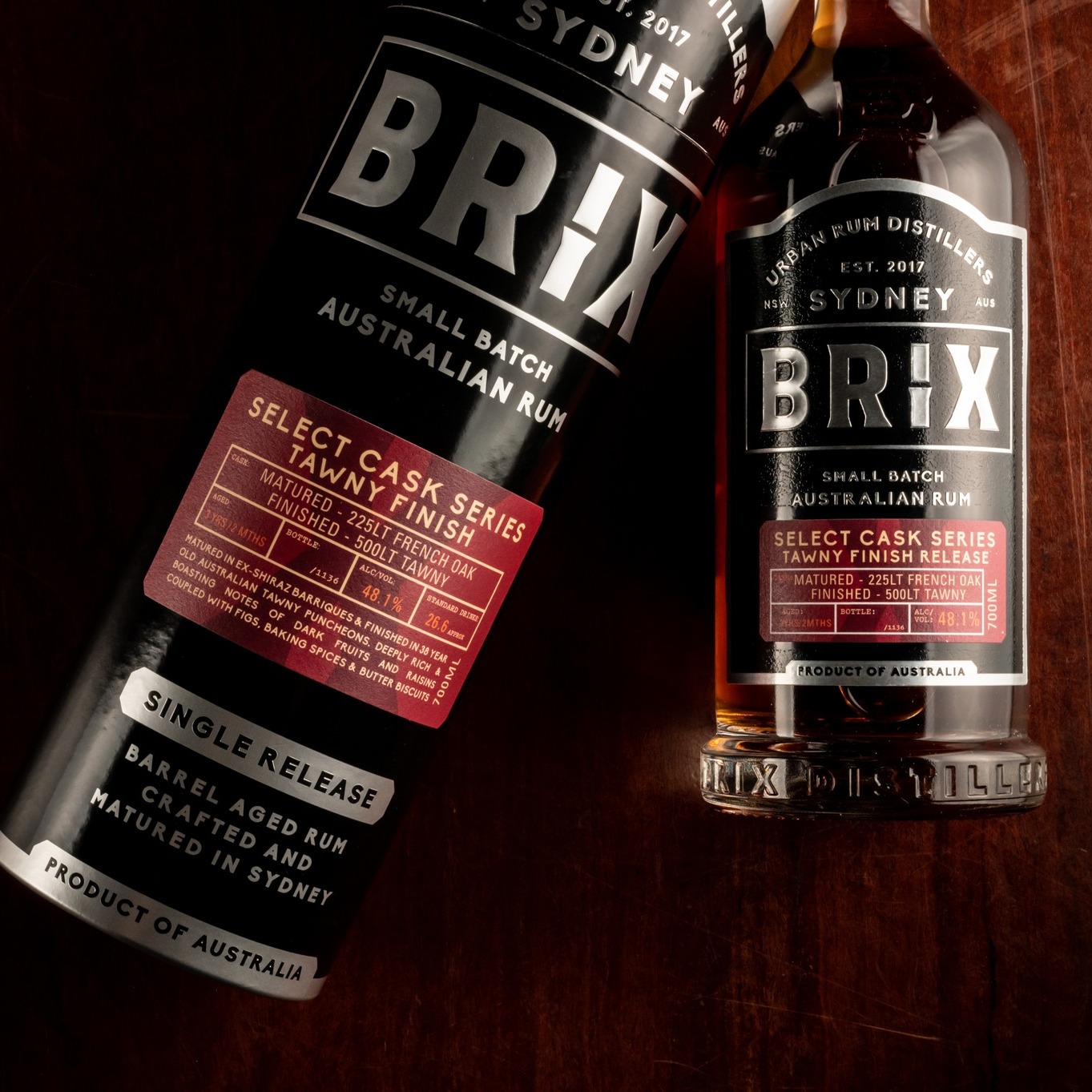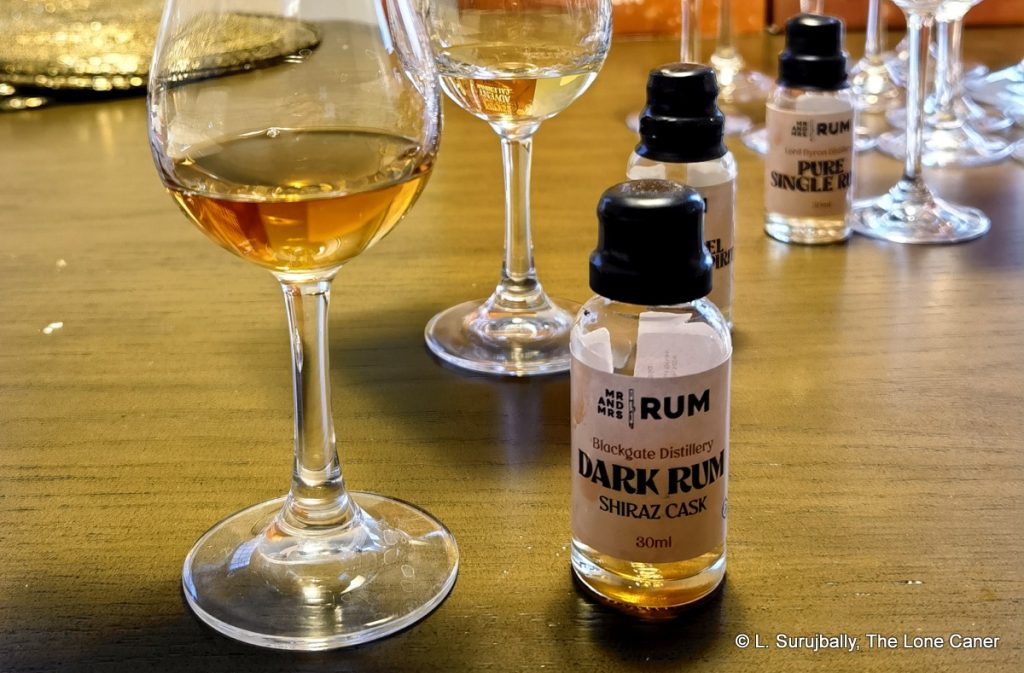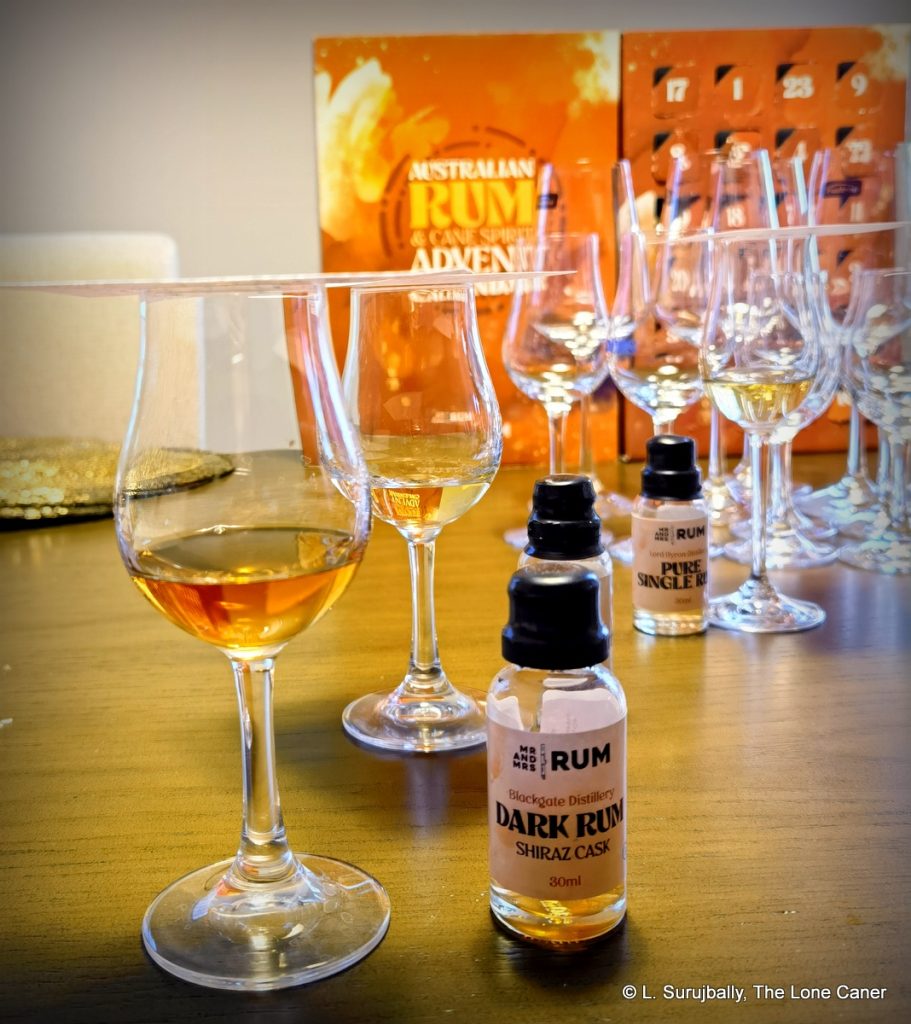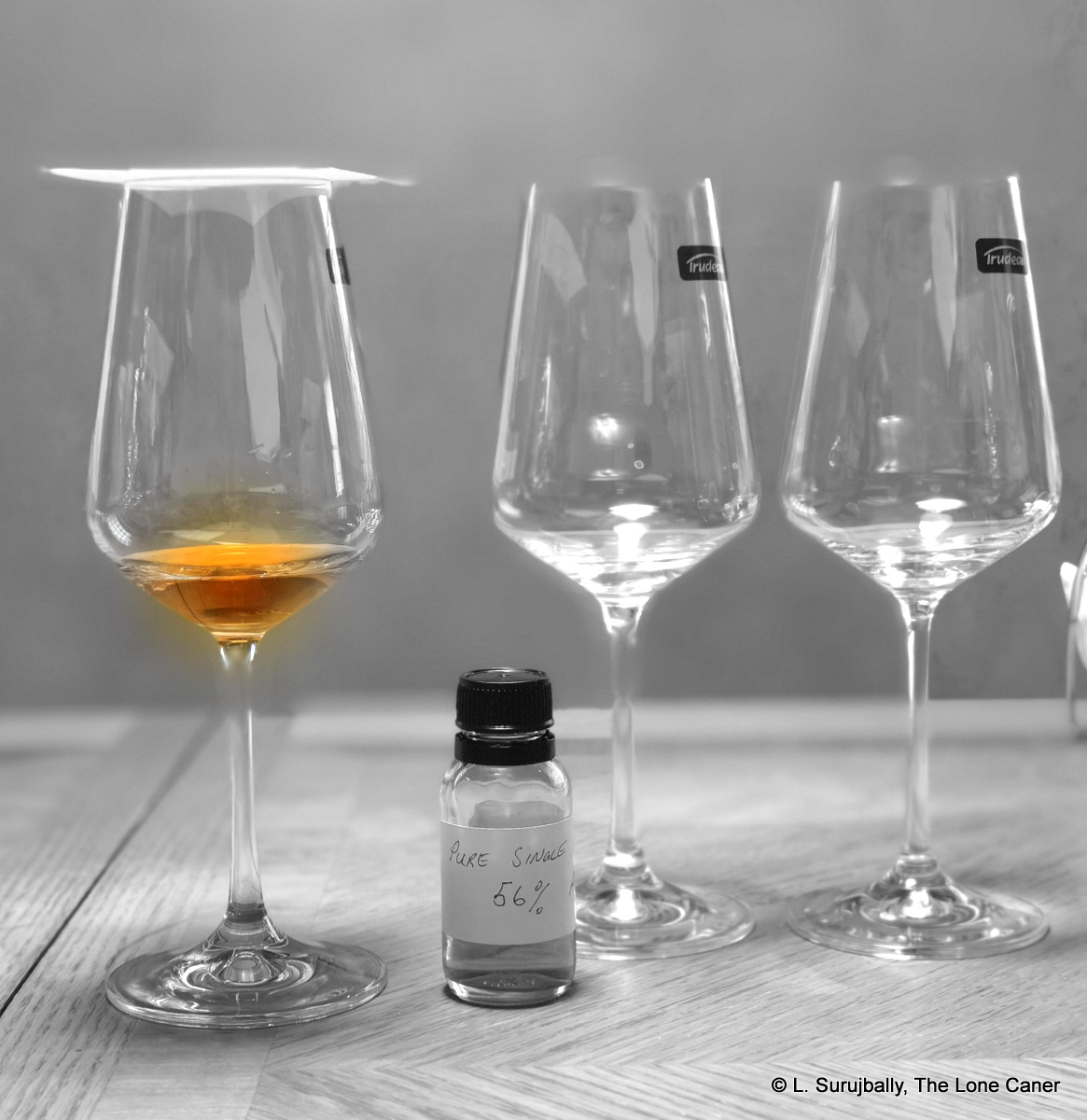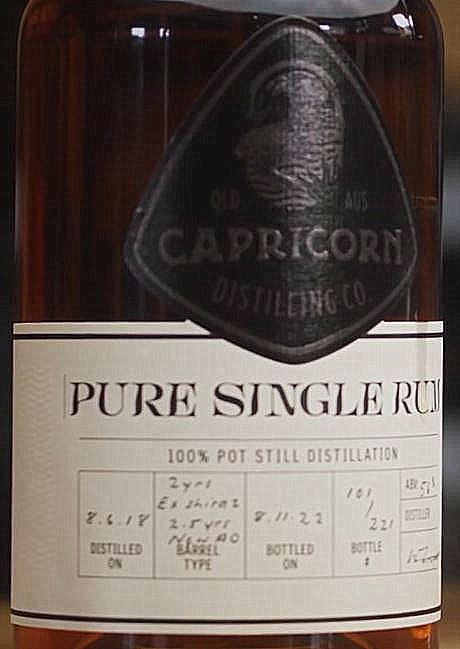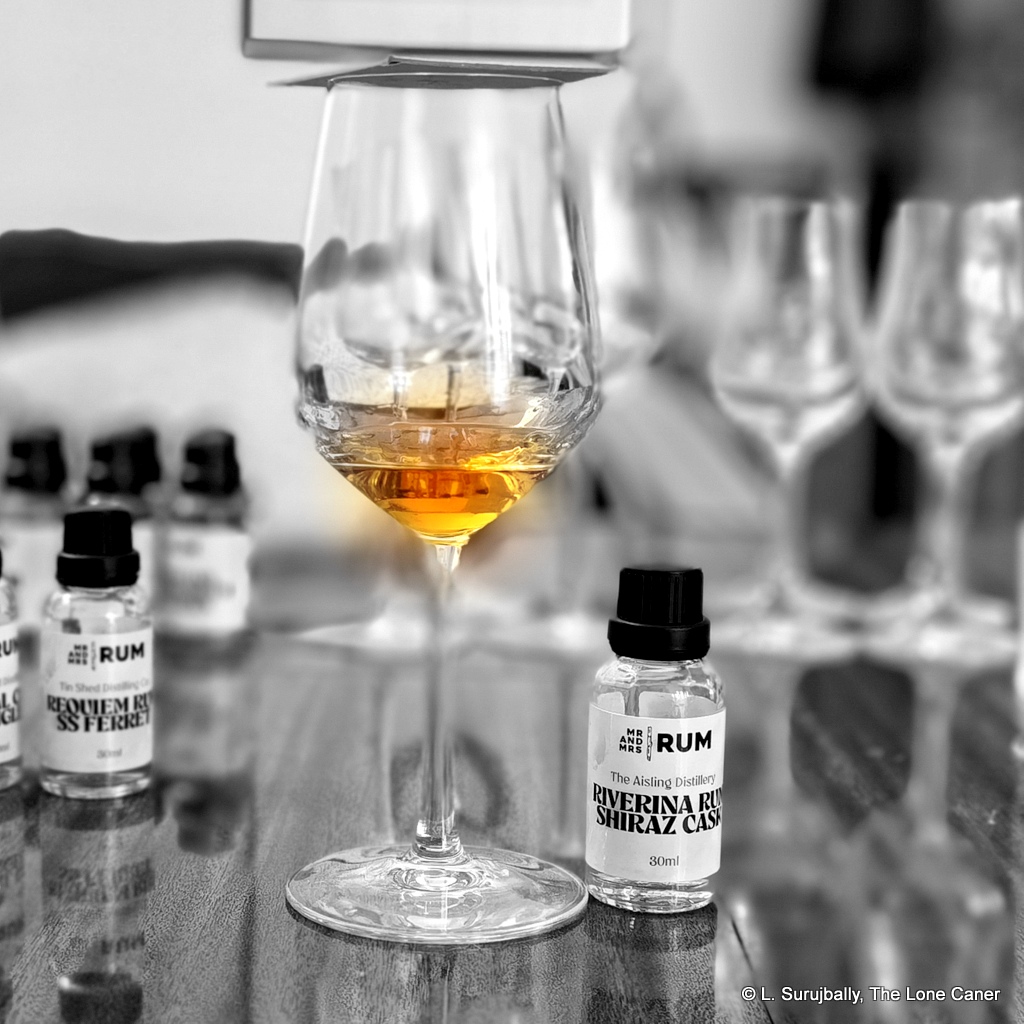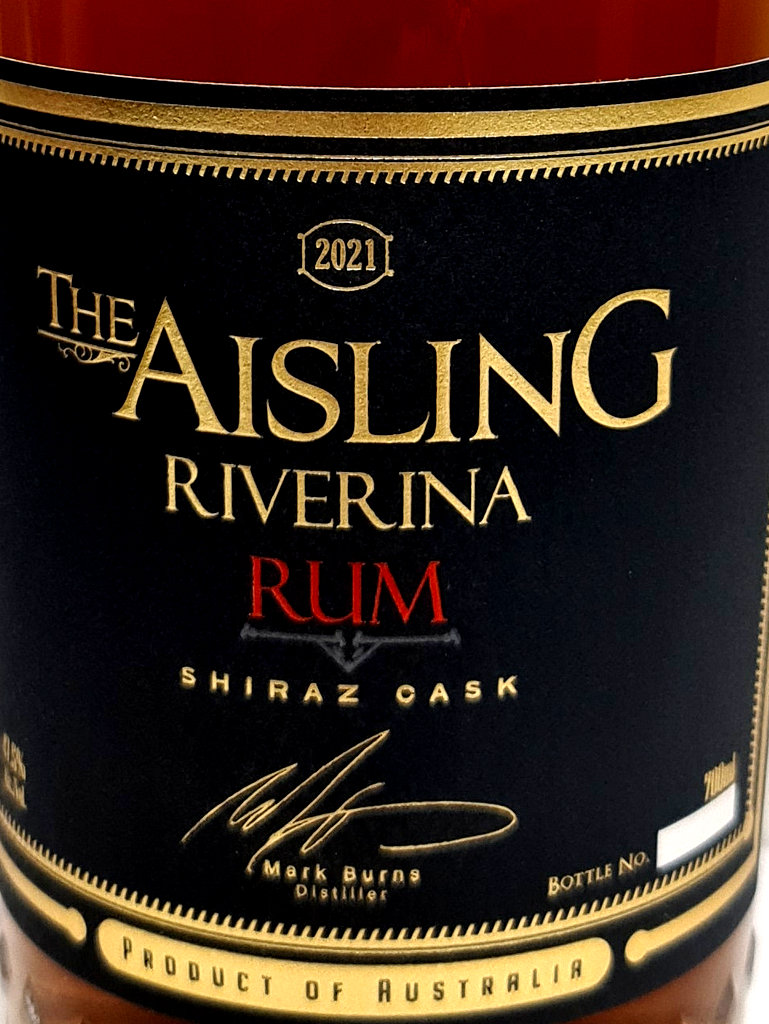The last time we looked in on the small urban distillery called Brix (located just due south of the Sidney Opera house, a stone’s throw off Flinders Street for those who like their geography straight), they were messing around with their unaged rum called the Urban Cane, which I quite liked. Here now we have a young aged rum, which turns out to be quite a nifty little number.
In the years since they began operations in 2017, Brix have significantly added to their portfolio: now they have a spiced rum, a mango (infused/flavoured) rum, a standard Australian rum, the aforementioned cane spirit, liqueurs, and a series of finished rums called the Select Casks. Plus ready to drink cocktail cans, branded glencairns, hats, t-shirts, tote bags and yes, for those who like going places and giving lousy presents — a t-shirt. Capitalism is alive and well in downtown Sidney.
As I noted with the first review, they had a sort of yuppie inner city vibe that contrasted interestingly with the more down to earth family ethos characteristic of so many of Australia’s current microdistillers (especially those in Queensland and elsewhere). And I also made that comment because it sure seemed like they built an entire pub / restaurant / bar establishment around their 1800 litre still (“Molly” – don’t you just love how Aussies name their stills? When was the last time you saw a Caribbean outfit do that?).
Leaving aside all these throwaway details, what we have here is a rum deriving from refinery grade molasses sourced from Bundaberg, fermented using champagne and Caribbean yeasts, the wash from which was then run through the aforementioned hybrid still, then aged three years in 225L French oak Shiraz barriques from Brokenwood Wines , plus another two months in 38 year old 500L Tawny puncheons. The final result was bottled at 48.1%, and the label says 1136 bottles – and for the record, the release won a Gold Medal in the 2022 Australian Distilled Spirits Awards.
Those wine casks must have quite an influence, because I must concede there’s a fair bit to unpack when sampling it. Nose first: it has a nicely traditional rummy nose with all the bits and trimmings – honey, fruits, caramel, cinnamon, vanilla, light molasses, and red grapes. This is then followed up with sweet raspberry jam and orange peel, and has a pleasant breakfast whiff of syrup over hot, freshly-made pancakes, and butter melting in a steaming bowl of cream of wheat…that kind of thing.
The palate settles down somewhat and isn’t quite on the same level, yet it still presents some pleasant, interesting tastes. Initially we get caramel bonbons, nuts, almonds, unsweetened chocolate, toasted rye bread with salted butter. The wine and port casks bring out the fruits again – somewhat indeterminate to be sure, yet subtly shading the whole, and somehow I am reminded of the delicate watercolours of Turner or Durer versus something more savagely elemental such as the oils of, oh, Caravaggio. And then there are notes of figs, brown sugar, cinnamon, even nutmeg and key lime pie which lead to a gentle, easygoing finish that’s sweet and light and redolent of pastries and soft red grapes.
It’s a nice, pleasant little sipping rum, this one, and the strength is just about right. I genuinely enjoyed it, because it presented us a traditional series of tastes without entirely giving itself over to a standard profile. There’s a bit of edge here, a slight swerve away from the ordinary, and it speaks really well for the aged rums that we can expect to see from this little distillery in the future. I’m going to enjoy looking out for the next one from Brix.
(#1085)(84/100) ⭐⭐⭐⭐
Other notes
- Video Recap is here.
Company background
The distillery was founded in 2017 after two years’ worth of planning and setup, by James Christopher, Damien Barrow and Siddharth Soin, three friends who are also partners in a popular local restaurant. They sourced an 1800-litre copper pot still made in Australia (called “Molly”) and forged direct connections with suppliers and growers so as to source local ingredients as far as possible: Australian molasses and organic sugar cane from their supplier, a farm in Woongoolba close by the Rocky Point sugar mill (Southern Queensland, just south of Brisbane), locally-made spices, barrels and everything else they need. Their outturn includes a limited edition white cane juice spirit (“Urban Cane,” issued annually ), a white mixer, a lightly aged gold and a spiced rum, plus some flavoured mixes. There’s more ageing out back, and I’m sure we’ll see that in the years to come, as rum education and rum improvement are part of what Brix is all about as well.
